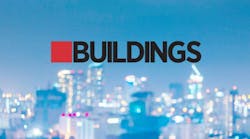How Predictive Technology Is Redefining Facilities Management
Connected technology, such as Internet of Things (IoT) devices, are having a massive impact on building management. Research by Deloitte found that building managers believe using connected technology to not only predict and diagnose problems, but then propose and execute solutions prior to employees even knowing the problem existed, is a “game changer.”
However, not everyone realizes the true extent of connected technology’s influence over building management. Technology is driving a dramatic shift in asset management as a whole—one that’s turning reactive processes into proactive, game-changing moves.
Here’s how technology is opening the door to predictive facilities management and how organizations are using it to reimagine success.
What’s Behind Predictive Building Management?
In order to understand where facilities management is going, it’s worth thinking about how maintenance is changing. Consider this: there was a time when “maintenance” really meant “repair.” For instance, an elevator would operate in working condition until it broke down. At that point, workers would come in, make a diagnosis, start repairs or replace parts. The elevator was either running or out of order.
The reality, however, was that the elevator’s operational health was much more complex. The unit, along with the parts within it, was running on a lifecycle. All along, parts were wearing down at different rates. In the past, facility managers simply didn’t have a way of knowing which pieces were wearing down until the whole unit malfunctioned or quit. Connected technology has changed all of that.
Today, with smart buildings, facility managers can access internal sensors and model data to take a more proactive approach to managing the operational health of a building’s assets. It’s now possible to see how well systems are working and assess the status of their lifecycles. This means maintenance pros can be alerted when a device is nearing the end of its productive lifecycle—reducing damage to entire systems, saving on costs of unnecessary replacements, and avoiding interruptions before they happen.
What does this mean for building managers and real estate pros?
This more proactive approach provides an immediate opportunity for up-front cost savings. Just as you can take preventive action to safeguard your physical health when your Apple Watch alerts you to an irregular or low heart rate, you can address a machine’s health before it fails and save it from more severe damage. However, the real advantage of this strategy comes from its impact on the workforce.
Anyone who’s had to cancel meetings because they are waiting for an elevator repair or HVAC system update understands the potential productivity savings that predictive technology can deliver. Even more pressing, medical labs that call for 24-hour refrigeration or uninterrupted medical equipment may get an edge from predictive technology that keeps a project from being derailed or prevents devastating outages.
Overall, predictive maintenance allows building managers to go from a reactive mindset to a proactive one. What’s more, technology is encouraging this same proactive approach in not just maintenance, but also entire offices and campuses.
Designing Better Spaces for Better Outcomes
Today, connected technology allows proactive building management to go far beyond just maintenance, because connected technologies can create transformational outcomes for utilities, space and human capital.
Most facilities managers already understand the cost savings that come from basic utility management, such as reducing wasted energy. In fact, government estimates suggest 30% of energy that’s used in commercial buildings is wasted.
Connected technology can be brought to bear on this problem. With analytics on IoT data such as real-time use from electric meters, energy managers can pinpoint the actions that will reduce energy spend—such as staggering startup of HVAC equipment that is producing spikes in peak demand or sending a tech out to a building for a remediation analysis to determine why energy use at that facility has suddenly climbed.
However, saving money by addressing utility optimization only scratches the surface when it comes to proactive facility management. Building managers are now using data to create more proactive office designs.
IoT sensors, badge tracking and other utilization technology can now accurately track where and how employees are working. Professionals can measure what offices, rooms and buildings employees are using. At the same time, they see what spaces are encouraging productivity or collaboration.
By observing where and how employees are working, organizations can develop spaces that fit employee needs and cut out the waste.
What Connected Technology Means for Organizations
Even when taken all together, efficiency in maintenance, utility costs and space costs isn’t the biggest prize. Connected building management technology can influence an even more powerful part of organizations: human capital.
Advisors like JLL have noted the 3-30-300 rule: Each year, utilities may cost $3 per square foot and space $30 per square foot, but the employees that occupy the space cost $300 per square foot. These employees and their mission are the entire reason the space was created in the first place. Investments that optimize the productivity of the workplace tend to yield a disproportionately high return on investment—and fantastic results for the organizational mission.
Take a mission-centric organization, such as a genetic research facility. In this space, productivity can mean much more than cost savings. Sure, a genetic research facility needs to save money, but if you’re in the business of positively changing the planet, human productivity can be the difference between life and death—literally.
In this situation, occupancy measurements take on a whole new meaning. By tracking space utilization and usage, organizations can completely reimagine their campuses. The data might inspire simple changes like dropping assigned seating or more elaborate ones such as creating an entire range of spaces, building conference rooms, jump spaces, town-hall meeting areas, libraries and hushed quiet spaces—a work environment where collaboration spaces for that inspiring conversation or a peaceful space to consider that delicate thought are just steps away.
Using space more effectively can extend the life of a campus by years. Even more importantly, tailoring the space to worker preferences and upping collaboration drives a more important outcome. Just a 10% improvement in productivity could provide the edge that enables researchers to cure cancer or solve a famine crisis.
Simply put, the true potential of predictive building management technology isn’t just in its cost savings—it’s in finding new opportunities to power humans and push an organization’s mission forward.
Use Predictive Building Management to Drive Better Outcomes
In the future, technology will continue to drive new opportunities to be proactive in building management. However, the secret to successfully implementing technology is keeping your mission in the driver’s seat.
Whether the end goal is to increase productivity, lower costs, or improve employee outcomes, building managers no longer have to sit back and react. The technology is here to empower proactive decisions.
About the author:
Steve Segarra, a graduate of MIT, serves as the CTO of Archibus-Serraview, a software provider delivering employee engagement apps that make the workplace a delight and facility management software and analytics that enable building and facility managers lower costs and lower their environmental impact—improving our planet’s sustainability.


